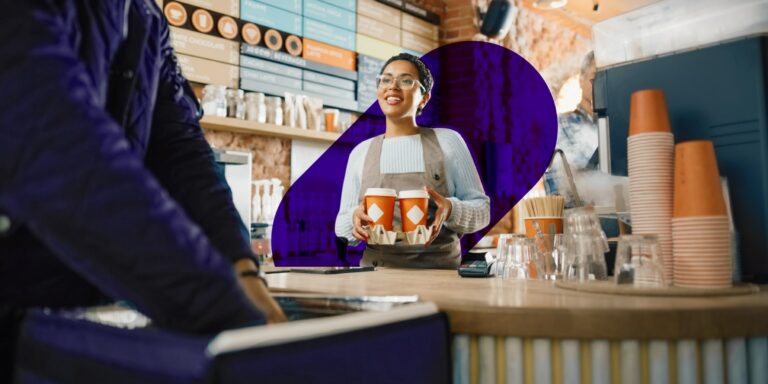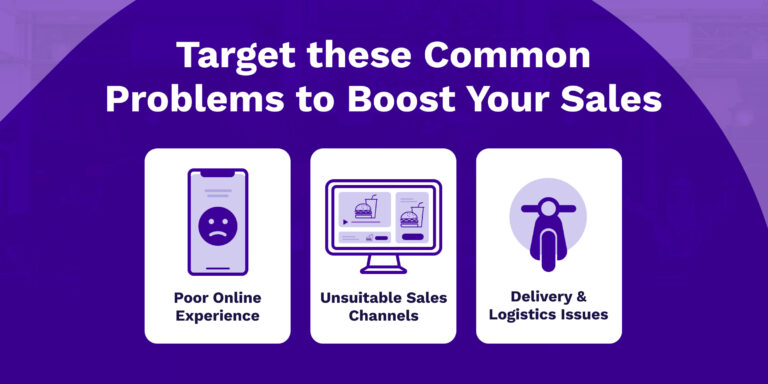How to Increase Food Delivery Sales: Common Problems & Fixes
Staying competitive in a rapidly-growing market
The dine-in scene in Singapore has made a strong recovery since the easing of COVID restrictions, but for most F&B restaurants, food delivery is far from an afterthought.
This is because consumer preferences have shifted during the pandemic, “serving up convenience that customers can no longer do without”, according to a report by CNA. For many restaurants, “delivery sales […] have become a key pillar of business”.
Research and consulting firm Frost & Sullivan’s analysis on the Southeast Asian food delivery business also shows “promising growth opportunities”, with “[i]ncreasing internet penetration and mobile applications” contributing to a compound annual growth rate of 14.1%.
It is thus imperative for F&B businesses to maintain a presence in the online delivery sector to capture a share of the revenue pie. The key question here is—how does one stay competitive and increase food delivery sales?
If your online delivery & takeaway revenue has stagnated or is on the decline, you might first want to ensure that you’ve addressed these 3 common problems faced by many F&B businesses.
Optimise your e-Shop experience
To encourage more successful checkouts and conversions, you should ensure the customer experience on your e-Shop is as seamless as possible.
Keep the information on your digital storefront updated, be it on a marketplace app or custom website. This includes service hours and contact details, but also your dish names, availability of items, and prices. More importantly, photos of your food & retail products should be well-lit and appetising in order to entice clicks.
On Oddle’s white-label e-Shop platform, banners and buttons are customisable so as to inform diners about your ongoing promotions and deals. F&B businesses who are part of Oddle’s community are also advised on industry best practices to drive sales. Restaurants are encouraged to offer meal bundles and first-time promotions on their e-Shop. This helps to increase the average basket size of orders as well as drive new customer acquisition.
Refine your sales strategy
There are many factors that determine the success of a restaurant’s sales strategy. Key among them is your choice of sales channels.
While it might seem intuitive to onboard your brand onto as many channels as possible (e.g. Grab, Deliveroo, etc.) to increase food delivery sales, the benefits have to be weighed against their cons. Are the commission fees eating away at a sizeable portion of your sales? Is the marketplace giving you enough exposure to generate brand awareness?
One way to determine which channels you should use is to consider the value proposition of your brand. If your brand is known for quick, efficient meals that target solo diners, utilising a marketplace with on-demand delivery might be best for you. If your restaurant mainly serves sharing dishes catered to large groups, consider building your own e-Shop or using a white-label platform like Oddle to accept pre-orders instead. Pre-orders can be made an hour or two ahead of delivery time, not just days away, and this gives you more time to manage your inventory and operations.
Furthermore, having your own e-Shop might open up other avenues of sales you have not previously tapped into. Even if your brand targets solo diners with on-the-go meals, an e-Shop would allow you to run a catering arm that markets individually-packed bento boxes for corporate lunches or large event gatherings. Home-grown brand QQ Rice is the perfect example. Their brick-and-mortar outlets are mostly takeaway concepts that serve nutritious rice rolls, but with an Oddle e-Shop, they’ve been able to provide catering services island-wide, thus driving revenue growth and expansion.
Establish a reliable delivery & logistics network
Having a reliable delivery network is crucial to your food delivery business. It’s also an important aspect of customer service.
Whether you decide to work with a third-party logistics network or a marketplace with their own delivery fleet, consider the timeliness of their delivery services, their delivery fees, and fulfilment rates. How much of the delivery cost do you have to bear? What percentage of their deliveries arrive on time? How many delivery incidents have been recorded (incorrect or incomplete orders, spillage, etc.). Does the delivery provider compensate for such incidents, or will your business have to cover the costs instead?
You might also choose to manage your own deliveries, but this might prove difficult the more your business grows.
On Oddle, your deliveries are fully-managed by our logistics team, who work hard round the clock to provide operational support. With a 99.7% fulfillment rate, a delivery radius that spans island-wide, and the flexibility of determining your own delivery fees, you’ll be able to focus on what you do best—making good food.
View our comparison table of best food delivery platforms, or read about how to Manage Food Costs in a Restaurant to reduce wastage.



